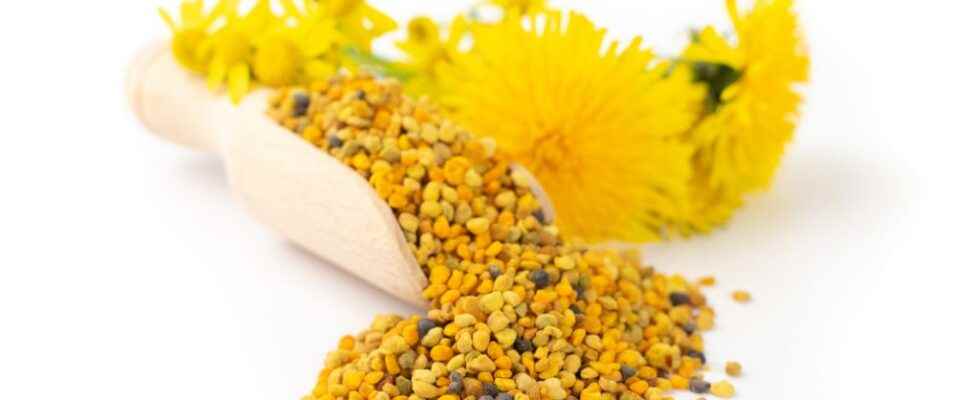the pollen has a reputation for being a superfood. For many years, he has been on the front page of health articles and has been invited to the biggest tables. But what is it really? What does science say about pollen? Is it really a miracle product and if so, what sort of pollen is recommended? So many questions that are answered in our article.
What is pollen?
The pollen consumed in recent years is collected by bees. It is the male seed of the flower stamens. Allergics are familiar with pollen since it causes them many inconveniences as soon as spring arrives. However, thanks to bees, the pollen becomes harmless and digestible. These little insects capture pollen in their legs as they forage. When they return to the hive, they moisten it so that the hundreds of thousands of grains collected do not fly away and it will be used to feed the whole hive. Beekeepers collect the precious pollen and offer different versions in the trade.
What does science say about the benefits of pollen?
Science indicates that not all versions of pollen have the same virtues. There is fresh pollen that needs to be stored in the refrigerator or dry pollen that can be stored at room temperature. Science has more perspective on dry pollen that has been in use for longer. However, fresh pollen contains living yeasts, especially lactic ferments; it would therefore retain more nutrients than dry pollen. Concretely, what is pollen used for? As mentioned above, it is a powerful antioxidant (rich in polyphenols) which therefore has multiple virtues. Rich in iron, vitamins, minerals, trace elements, fibers and immediately bioavailable proteins which include the eight essential amino acids, it mainly helps to keep in shape and fight against fatigue and aging. restore the acid-base balance (it is alkalizing) and it has an incomparable action on the intestinal microbiota (it is a symbiotic which brings together very high quality pre and probiotics) and therefore on the immune system. But its content of beneficial nutrients varies greatly from product to product.
What dosage for pollen?
Pollen is currently only used internally. It is to be ingested, but its form may vary. Cool or dry, it can also be available as a gum. If you like the taste, you can just chew it. Otherwise, the pollen grains can be ingested with a drink. For it to remain effective, it is recommended to consume it as a 6-week cure in spring and fall. Start by taking a teaspoonful and gradually increase until you take two to three tablespoons per day. Important: ideally prefer organic pollen and the fresh frozen form which contains all the exceptional elements of pollen (some of which disappear during the drying stage).
Note that between 30 and 50 g of pollen (cistus in particular) per day for ten days can restore the intestinal flora.
Contraindications for pollen
Pollen treatment is not necessarily recommended for all profiles. People who use immunosuppressive drugs should avoid pollen because its effects may interfere. Bee pollen does not cause an allergic reaction, because its composition is completely different from that of airborne pollen. As its intake of vitamins and minerals varies a lot from one brand of pollen to another, it is rather recommended to use multivitamin supplements rather than pollen when we want to supplement vitamins.
Loading widget
Subscribe to the Top Santé Newsletter to receive the latest news for free
